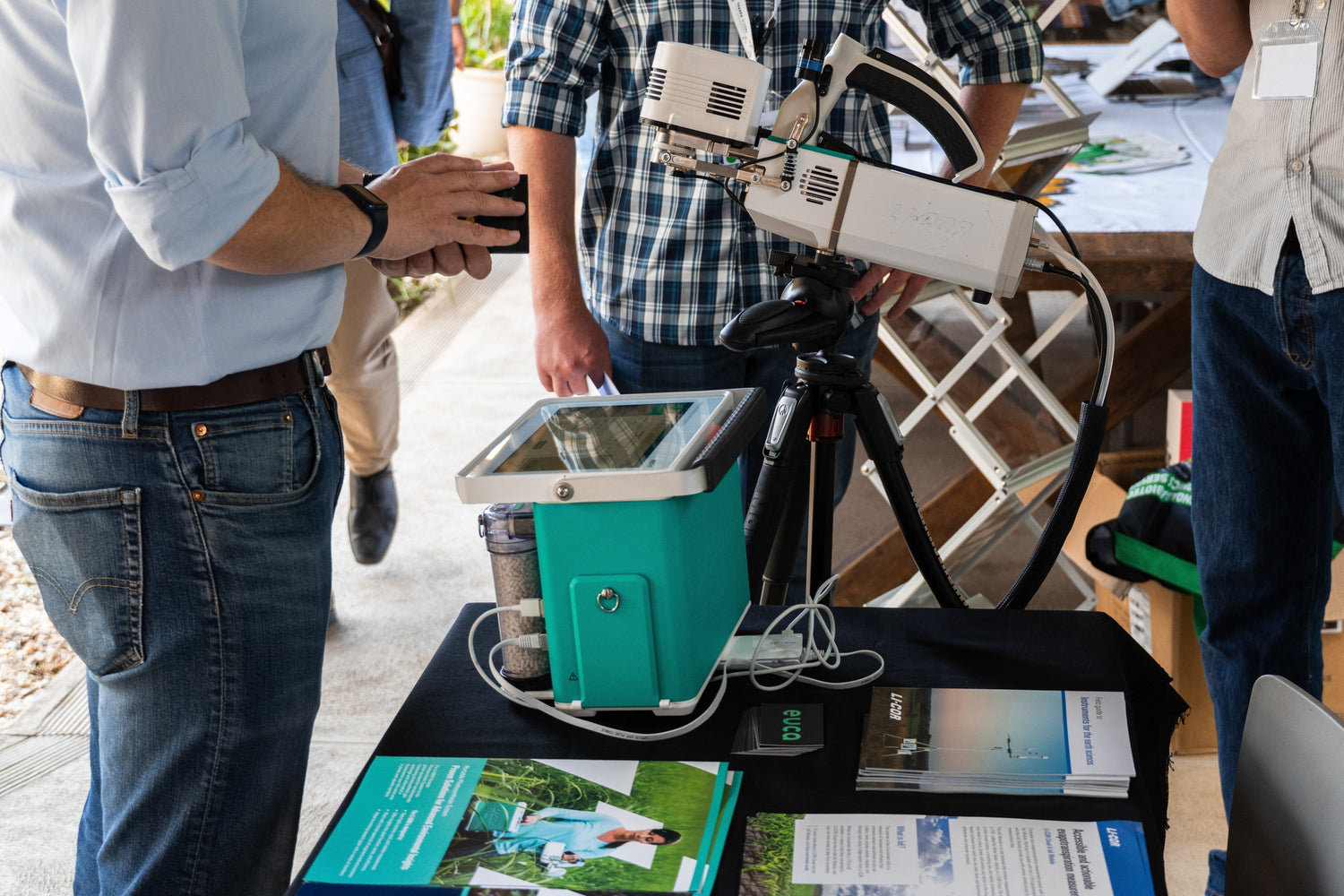Step into the Plant Science Community
Our first SAAB Conference, hosted by the South African Association of Botanists, marked a significant milestone as the organisation’s 50th annual gathering. Held in the bushveld surroundings of the WITS Rural Facility, the event offered more than just lectures and posters, it immersed us in the energy and excitement of South Africa’s plant science community.
As the official LI‑COR distributor in Southern Africa, we were proud to represent the LI‑6800 Portable Photosynthesis System throughout the conference. We spent much of our time listening to researchers share their experiences, and seasoned users reflect on their work with the system. These conversations helped us understand not only the value of the instrument we had presented at our table, but also the real needs of the people who use it.
Being alongside LI‑COR’s Field Application Scientist, Dr Ian Smillie, gave us valuable insight into the LI-6800's role in research. Dr Smillie delivered two engaging presentations that deepened attendees’ understanding of the LI‑6800’s history and the best practices for its use.
 Image: Peter van Zyl, EUCA’s Technical Sales Manager and Product Specialist, demonstrates the LI‑6800 system during a hands-on session at the SAAB Conference.
Image: Peter van Zyl, EUCA’s Technical Sales Manager and Product Specialist, demonstrates the LI‑6800 system during a hands-on session at the SAAB Conference.
Photosynthesis in Focus with Dr Ian Smillie
Dr Smillie’s presentations unpacked the intricacies of photosynthesis in a way that made complex science feel accessible. He introduced the audience to the dynamic assimilation technique, an advanced method for assessing how plants respond to fluctuating light and environmental conditions. By combining gas exchange and chlorophyll a fluorescence measurements, researchers can gain valuable insights into carbon fixation, water use efficiency, and the overall physiological state of plants. He also shared a historical journey through photosynthesis research, reminding us how far instrumentation has come, from temperamental field vans to compact and precise systems like the LI‑6800.
Even the best equipment depends on how thoughtfully it’s used, because reliable data doesn’t come from the instrument alone, but from the care, intention, and understanding behind every measurement.

Image: Dr Ian Smillie presents a session on dynamic assimilation techniques and gas exchange measurement at the SAAB Conference.
 Image: Explaining the steady-state gas exchange model, Dr Smillie highlights the principles behind mass balance and carbon assimilation.
Image: Explaining the steady-state gas exchange model, Dr Smillie highlights the principles behind mass balance and carbon assimilation.
In his second talk, Dr Smillie shifted focus to common pitfalls researchers face when making leaf-level physiological measurements. He walked the audience through real-world examples where instrumentation, application, or interpretation errors can quietly skew results. Emphasising that gas exchange blends physics, biology, and engineering, he highlighted how even small oversights, such as skipping a sensor matching step or misjudging leaf stability, can lead to misleading conclusions.
Connections Through Research and Curiosity
These presentations sparked many conversations at our stand throughout the conference. We were pleasantly surprised by how many visitors approached us with curiosity, often asking, “What is this?” when they saw the LI‑6800 set up. For some, it was their first introduction to the system. For others, it opened up new possibilities for future research. It was exciting to witness that "aha" moment as people realised the potential of precise gas exchange and chlorophyll a fluorescence measurements in their own work.
 Image: Dr Ian Smillie engages with researchers at the EUCA Tech stand, discussing the features of the LI‑6800 system.
Image: Dr Ian Smillie engages with researchers at the EUCA Tech stand, discussing the features of the LI‑6800 system.
 Image: EUCA’s information table at the SAAB Conference, featuring LI‑COR brochures, environmental monitoring resources, and system guides for researchers exploring plant science solutions.
Image: EUCA’s information table at the SAAB Conference, featuring LI‑COR brochures, environmental monitoring resources, and system guides for researchers exploring plant science solutions.
It was a reminder that our role goes far beyond products; it's about showing up, learning with the community, and growing together.
What We Shared at SAAB
Explore more of EUCA and LI-COR's conference resources below:
| Resource Title | Description | Link |
|---|---|---|
| LI‑COR Product Field Guide | Overview of LI‑COR research tools for photosynthesis and gas analysis. | Download PDF |
| Smart Agri Monitoring Brochure | EUCA’s agri-tech solutions for data-driven farming and IoT monitoring. | Download PDF |
| LI‑6800 Technical Brochure | Technical overview of the LI‑6800 system and its key features. | Download PDF |



